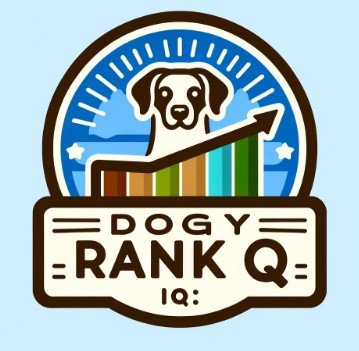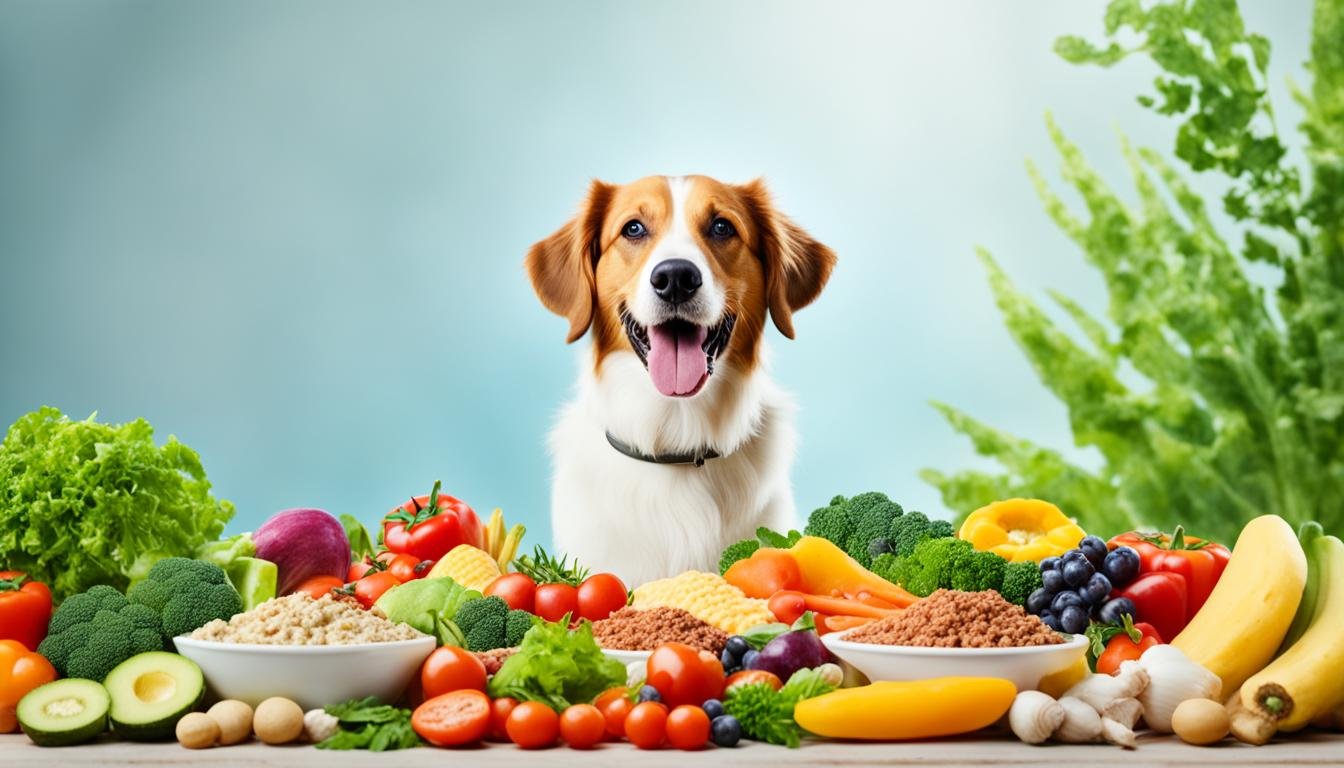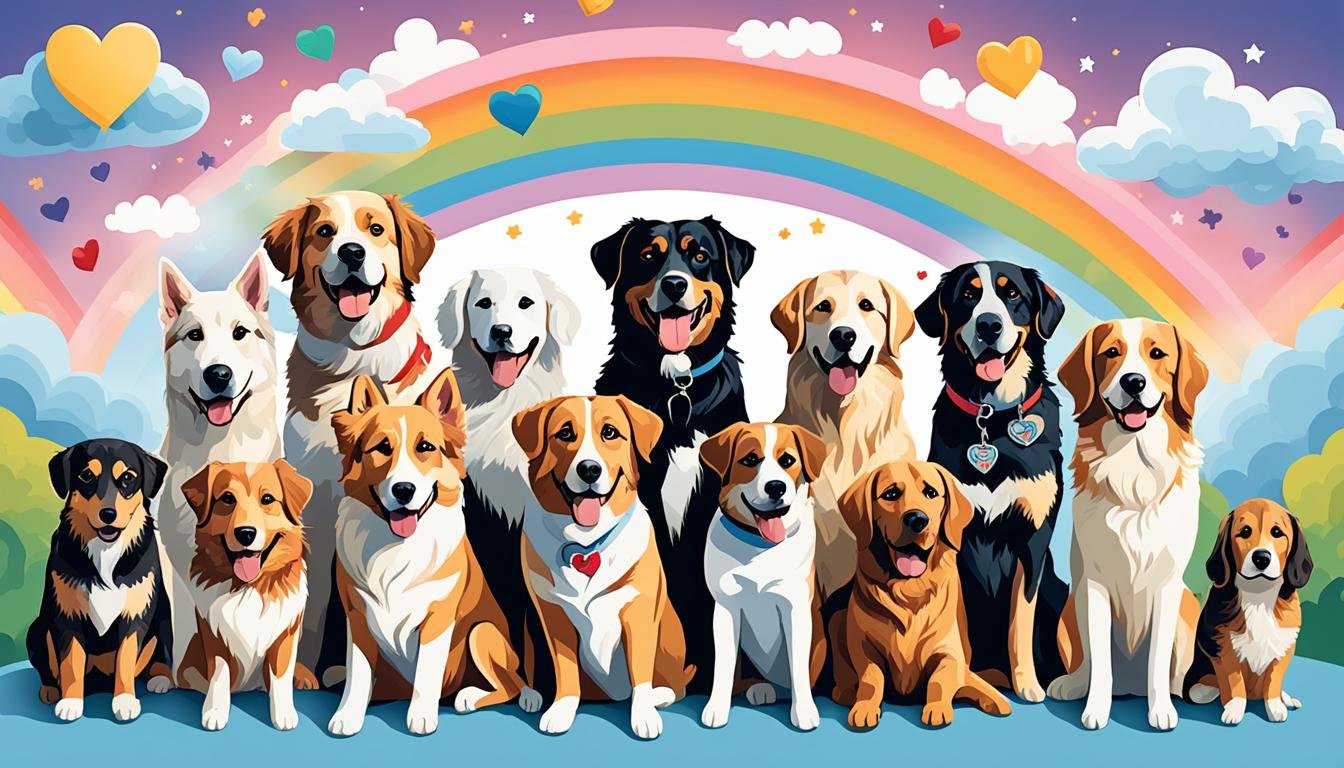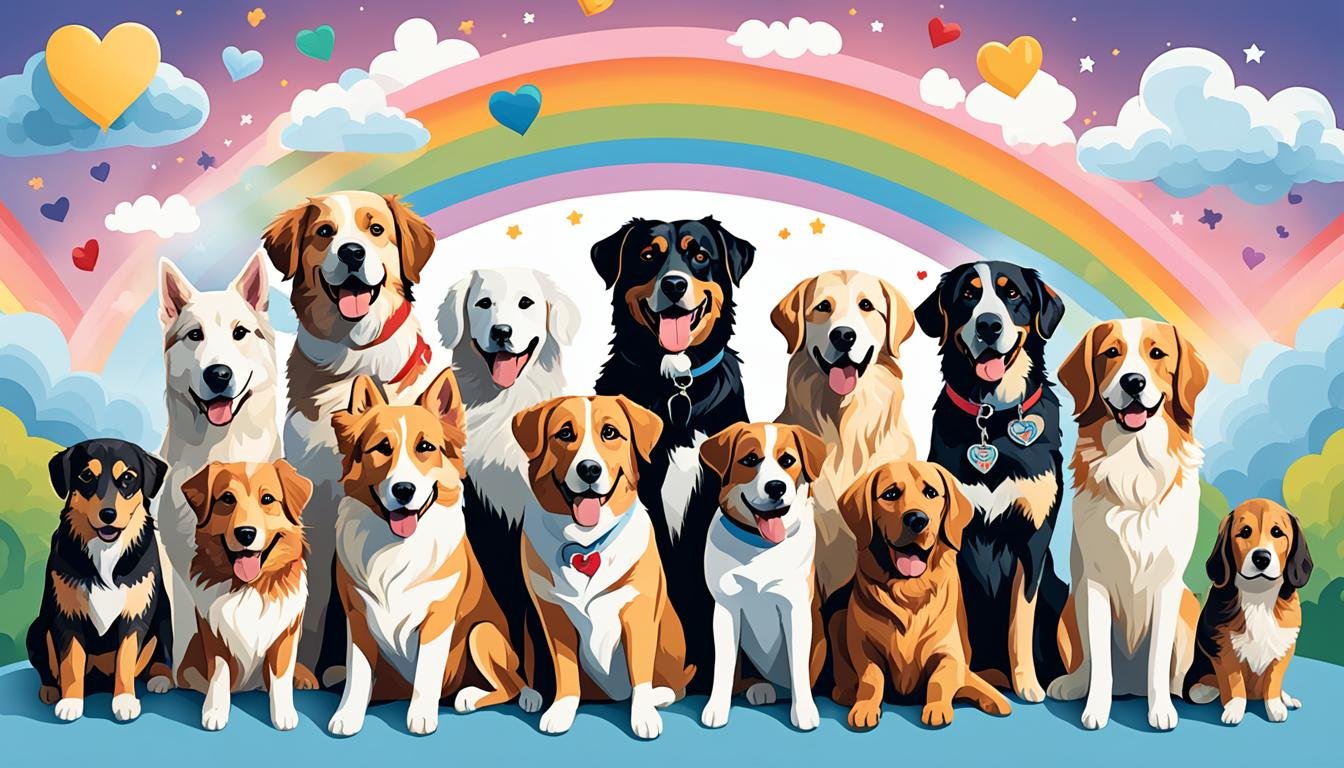Did you know that over 54 million U.S. households own at least one dog? That’s a staggering number of pups that need to be fed every day. But what happens when you unexpectedly run out of your dog’s regular food? It’s dinner time, and your canine companion is looking at you with those pleading eyes, as if to say, “Seriously? You don’t have my food?”
Don’t worry, there are several top ways to feed your dog daily without dog food. From nutritious homemade meals to healthy human food treats, you can keep your furry friend well-fed, even when their usual kibble is nowhere to be found. In this article, we’ll explore the best alternative dog diets, natural dog feeding options, and sustainable dog feeding solutions to ensure your pup stays happy and healthy.
Key Takeaways
- Understand the need for alternative dog feeding options when you run out of regular dog food.
- Learn how to prepare nutritious homemade dog meals using common human foods.
- Discover safe and healthy human foods that can be fed to dogs as occasional treats.
- Identify dangerous human foods that should be avoided when feeding your dog.
- Transition your dog back to their regular diet gradually to prevent digestive issues.
Understanding the Need for Alternative Dog Feeding
Should you run out of dog food, there’s a good chance you have the ingredients for an “in a pinch” meal or two for your dog. Know which foods are healthy for dogs and which ones to avoid before you assemble a meal.
Running Out of Dog Food Unexpectedly
Certain human foods, like carrots and blueberries, can be safe for most dogs. But others, like garlic and onions, can be toxic. Dogs and humans metabolize foods differently. For this reason, some foods are safe for humans to eat but may be toxic and potentially deadly for dogs.
Transitioning to a New Dog Food Brand
On the other hand, there are many human foods that are perfectly safe and even healthy for dogs to eat as an occasional treat. This includes foods like carrots, blueberries, peanut butter, eggs, salmon, and watermelon. However, there are also many human foods that are dangerous for dogs, such as grapes, raisins, chocolate, onions, and macadamia nuts.
Exploring Homemade Dog Meal Options
Preparing Nutritious Homemade Dog Meals
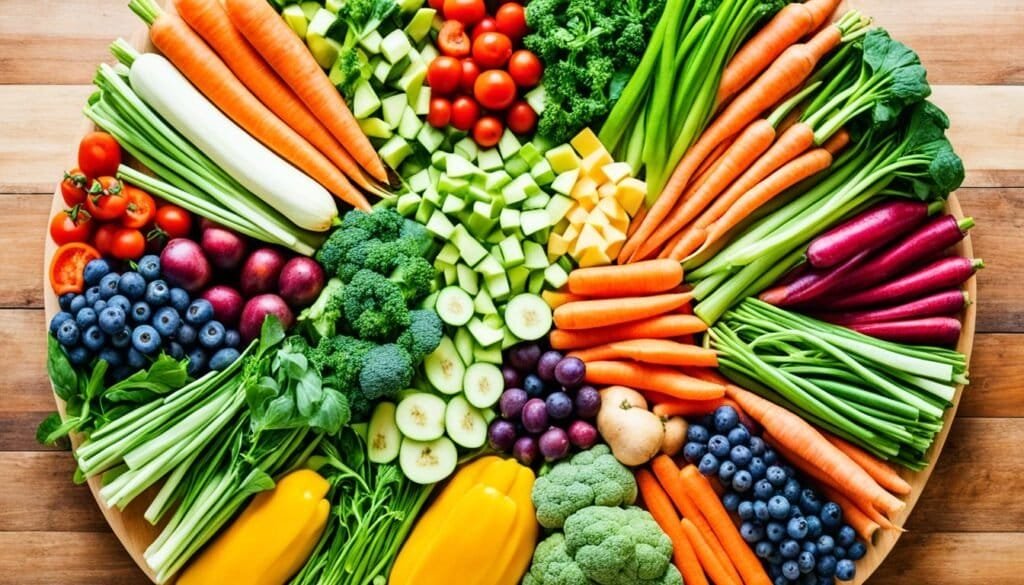
When you find yourself unexpectedly running low on your dog’s regular food, it’s time to get creative in the kitchen. Luckily, you likely have a variety of healthy ingredients in your pantry and refrigerator that can be used to whip up a delicious and nutritious homemade meal for your canine companion.
Balancing Protein and Carbohydrates
The key to preparing a well-balanced homemade dog meal is to focus on providing the right combination of lean protein and complex carbohydrates. Lean protein sources like ground turkey, cooked chicken, or eggs can be paired with complex carbs such as brown rice, oats, or sweet potatoes to create a complete and satisfying meal for your dog.
Choosing Safe and Healthy Ingredients
When selecting ingredients for your homemade dog food, it’s important to choose options that are safe and beneficial for your pet. Avoid ingredients like onions, garlic, grapes, and chocolate, which can be toxic to dogs. Instead, opt for wholesome ingredients like canned vegetables, plain yogurt, mild cheeses, and fresh fruits and veggies.
| Ingredient | Amount | Nutrition |
|---|---|---|
| Coconut Oil | 1 tablespoon | Healthy fats |
| Ground Turkey | 1 pound | Lean protein |
| Zucchini | 1 large | Vitamins and fiber |
| Baby Spinach | 1 cup | Antioxidants and nutrients |
| Shredded Carrots | 1 cup | Beta-carotene and fiber |
| Turmeric | 1/2 teaspoon | Anti-inflammatory properties |
| Egg | 1 | Protein and nutrients |
| Cooked Rice | 3 cups | Complex carbohydrates |
By combining these wholesome, nutrient-dense ingredients, you can create a homemade dog meal that provides your furry friend with the balanced nutrition they need to thrive.
Top Ways to Feed Your Dog Daily Without Dog Food
Now that you’ve solved the immediate problem of feeding your dog, you’ve given yourself some time to get more dog food. Once you’ve done that, it will be time to get your dog back to their regular diet. Not so fast, though—abrupt dietary changes can upset a dog’s tummy.
To ease your dog’s transition back to their usual kibble or canned food, try gradually reintroducing it over the course of several days. Start by mixing their regular food with the “in a pinch” homemade meals you prepared, then slowly increase the ratio of commercial dog food until your pup is back to their normal diet.
This gradual approach will help prevent gastrointestinal issues that can arise from sudden changes to a dog’s diet. It’s also a good idea to keep a small supply of your dog’s regular food on hand to avoid future emergencies. Consider storing a week’s worth in an airtight container or ordering online with automatic shipments to ensure you never run out unexpectedly.
With a little planning, you can ensure your canine companion always has access to the balanced, nutritious meals they need, even when you’re temporarily out of commercial dog food. By transitioning slowly and keeping a backup supply, you can maintain your dog’s health and prevent any digestive distress during these occasional feeding challenges.
Safe Human Foods for Dogs
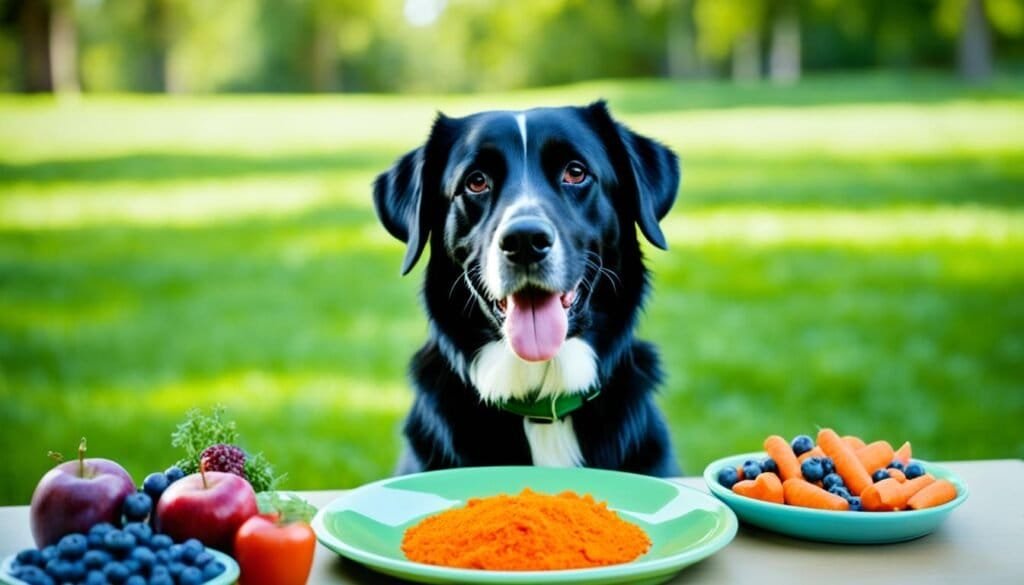
Lean Proteins
White meat chicken is ideal, but ground turkey or beef are also suitable. Boiling the meat is preferable to frying or grilling. Canine food allergies are commonly caused by meat-based proteins, like chicken and beef. Chronic health conditions like kidney or liver disease require a low-fat diet.
Complex Carbohydrates
Plain, complex grains, like brown rice, couscous, and farina, are good options. Cooked white or sweet potatoes and plain, unprocessed oatmeal (not the sugary packets) can also provide complex carbohydrates.
Fruits and Vegetables
Canned vegetables, such as corn, peas, and carrots (rinsed and drained to remove sodium), as well as fresh, cooked or raw vegetables like carrots, corn, and broccoli, can be good additions. Fruits like blueberries, strawberries, and sliced bananas and pears can also make healthy snacks.
Dangerous Human Foods to Avoid
Toxic Ingredients for Dogs
Certain human foods, including grapes, raisins, onions, and garlic, are highly toxic to dogs. Even small amounts of these items can lead to rapid kidney failure and death in canines. It is crucial to keep these dangerous ingredients securely out of your dog’s reach.
High-Fat and High-Sodium Foods
Processed foods like bacon and deli meats are off-limits for dogs due to their excessive sodium and fat content. Consuming these types of foods can cause digestive upset and other serious health issues in dogs. It’s best to avoid feeding your furry friend any high-fat or high-sodium human snacks.
| Toxic Ingredients | Health Risks |
|---|---|
| Grapes and Raisins | Kidney failure |
| Chocolate | Vomiting, diarrhea, heart issues, seizures, death |
| Macadamia Nuts | Muscle tremors, vomiting, hyperthermia, weakness |
| Onions and Garlic | Anemia, weakness, vomiting, breathing problems |
| Avocado | Severe health issues due to the toxic compound persin |
| Xylitol | Blood sugar drop, liver failure |
Transitioning Back to Regular Dog Food
Now that you’ve solved the immediate problem of feeding your dog, it’s time to get them back to their regular diet. However, abrupt dietary changes can upset a dog’s tummy, so it’s important to transition them back gradually.
Gradual Reintroduction
Over the course of several days, mix in increasing amounts of your dog’s regular food with the “in a pinch” food you provided. Start with a 25% new diet and 75% old diet on day one, then move to a 50/50 mix by day three. By day five, you should be at 75% new diet and 25% old diet, and finally, on day seven, your dog can be eating 100% of their regular food.
Preventing Future Food Emergencies
To avoid another food emergency, consider keeping a week’s worth of your dog’s regular food in a plastic baggie. That way, once the main bag is empty, you’ll know it’s time to restock. If you order your dog food online, setting up an “auto-delivery” option can also ensure you always have extra on hand.
Conclusion
While running out of your dog’s regular food may seem like a minor inconvenience, it’s an opportunity to explore healthier and more sustainable feeding options. Remember, your dog’s diet should provide a balanced mix of protein, carbohydrates, and essential nutrients to support their overall well-being.
By taking the time to prepare wholesome, homemade meals using safe, human-grade ingredients, you can ensure your furry friend is receiving the nourishment they need. However, it’s crucial to transition back to their regular diet gradually to avoid any digestive distress.
Ultimately, being prepared for unexpected food shortages and making informed decisions about your dog’s nutrition can contribute to their long-term health and happiness. With a little creativity and care, you can provide your canine companion with delicious and nutritious meals, even when their usual dog food is unavailable.
FAQ
What are some healthy human foods that can be used to feed dogs in an emergency?
Healthy human foods for dogs include lean proteins like chicken, turkey, or beef, complex carbohydrates like brown rice or sweet potatoes, and fruits and vegetables like carrots, blueberries, and watermelon.
What human foods should be avoided when feeding dogs?
Toxic human foods for dogs include grapes, raisins, onions, garlic, chocolate, and macadamia nuts. These can be harmful or even deadly for dogs.
How can I gradually transition my dog back to their regular dog food?
To transition your dog back to their regular diet, mix in increasing amounts of their regular dog food with the “in a pinch” homemade food over several days until they are eating only their regular food. Abrupt changes can upset a dog’s stomach.
How can I prevent running out of dog food in the future?
To avoid future food emergencies, keep a week’s worth of your dog’s regular food in a plastic baggie. When the main bag is empty, it’s time to replenish. You can also set up auto-delivery for your dog’s food to ensure you never run out.
Are there any special considerations for dogs with health conditions when preparing homemade meals?
Yes, dogs with conditions like kidney or liver disease may require a low-fat diet. It’s best to consult your veterinarian before feeding your dog a homemade meal, especially if they have any underlying health issues.
